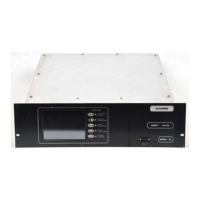Do you have a question about the Harris ZX10 and is the answer not in the manual?
Lists the Harris ZX series solid-state radio transmitters covered by this manual.
Highlights the key useful features and advantages of the Harris ZX Series transmitters.
Provides an overview of the ZX series solid-state transmitters and their main assemblies.
Explains how ZX transmitters are named based on exciter and amplifier chassis combinations.
Describes the three operating modes (FM, FM+HD, HD) that ZX transmitters can support.
Details the solid-state construction and hot-pluggable modules used in ZX transmitters.
Refers to figures providing simplified block diagrams of amplifier and transmitter models.
Identifies and describes the key subassemblies within the ZX series amplifier and transmitters.
Discusses various add-on options and accessories that may be present in a ZX transmitter system.
Outlines Harris's field service options for transmitter installation and commissioning.
Provides instructions for unpacking the transmitter and inspecting for shipping damage.
Details the procedure and conditions for returning or exchanging equipment.
Stresses the importance of studying the technical manual and drawings before installation.
Guides on choosing a proper installation location, considering environmental factors.
Specifies the AC power requirements for transmitters, including voltage and phase options.
Recommends the use of surge protection devices for incoming AC mains lines.
Explains the necessity of AC safety ground and RF earth ground connections for the transmitter.
Details the forced air cooling system requirements and considerations for transmitter operation.
Outlines safety measures for personnel and equipment during installation and operation.
Explains the methods for remotely controlling the ZX series transmitter.
Describes the front panel controls, indicators, and the controller board features.
Details the system metering panel used in higher power models for monitoring output power.
Provides essential procedures for the transmitter operator.
Discusses the RF signal path from the exciter through amplifiers to the output.
Explains the function of the output assembly, including the combiner and harmonic filter.
Details the AC power input and DC distribution within the amplifier chassis.
Describes the PA backplane's role in supporting RF amplifiers and detecting faults.
Explains the IPA backplane's function, fault detection, and shutdown capabilities.
Details the I/O filter board's role as the main interface for various connections.
Explains the interface board connecting power supply modules to the chassis.
Describes the load board's function in monitoring ballast load temperatures.
Details the PA module's RF amplification and bias control circuitry.
Explains the functions of the transmitter controller PCB for operation and state management.
Describes the auto-restart circuit's function to restart PA modules after transient events.
Details the Automatic Power Control (APC) circuit and how power levels are adjusted.
Explains how the transmitter selects operating modes and adjusts bias levels.
Describes how the front panel meter displays operating parameters like power, voltage, and current.
Details how fault conditions and operational status are indicated via LEDs.
Explains the assembly that displays system RF forward and reverse power.
Describes interconnecting multiple PA chassis for parallel operation as a single transmitter.
Provides general guidance for maintaining transmitter performance and longevity.
Recommends maintaining a stock of spare parts for quick issue resolution.
Outlines crucial safety measures to follow during maintenance procedures.
Advises on logging transmitter performance and results for troubleshooting.
Describes the information to be recorded in the maintenance log for failure reporting.
Suggests a routine for cleaning and monitoring to detect potential problems.
Provides Mean Time Before Failure (MTBF) estimates for key subassemblies.
Details fundamental maintenance tasks for operators and technicians.
Outlines advanced procedures for chief engineers and lead technicians.
Provides notes on replacing major subassemblies like modules and PCBs.
Provides contact information and resources for obtaining technical support from Harris.
Directs the reader to a table for diagnosing and resolving transmitter problems.
Lists replaceable parts for the ZX5000 model, including part numbers and reference designators.
Lists replaceable parts for the ZX10 model, including part numbers and reference designators.
Introduces the FM Web Remote option for ZX series transmitters and its structure.
Describes the FM Web Remote's functionality for monitoring and control via web and Ethernet.
Provides instructions for installing the FM Web Remote option.
Explains how to monitor, log, and command the transmitter using the FM Web Remote.
Explains the microcontroller, software stack, and hardware components of the FM Web Remote.
Covers key maintenance procedures for the FM Web Remote.
Provides a table for troubleshooting common issues with the FM Web Remote.
| RF Output Impedance | 50 ohms |
|---|---|
| Audio Input Impedance | 600 ohms balanced |
| Output Power | 10000 W |
| Modulation | FM |
| Power Supply | Internal |
| Cooling | Air-cooled |
